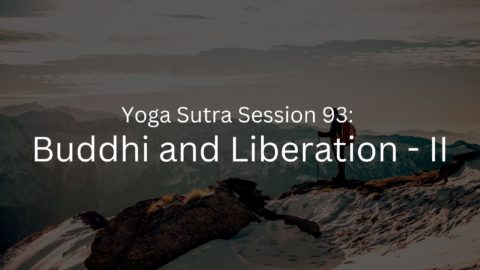Arthritis is the swelling and tenderness of one or more of your joints. The main symptoms of arthritis are joint pain and stiffness, which typically worsen with age. The most common types of arthritis are osteoarthritis and rheumatoid arthritis.
Osteoarthritis causes cartilage – the hard, slippery tissue that covers the ends of bones where they form a joint – to break down. Rheumatoid arthritis is a disease in which the immune system attacks the joints, beginning with the lining of joints.
Uric acid crystals, which form when there’s too much uric acid in your blood, can cause gout. Infections or underlying disease, such as psoriasis or lupus, can cause other types of arthritis.
Symptoms
The most common signs and symptoms of arthritis involve the joints. Depending on the type of arthritis you have, your signs and symptoms may include:
- Pain
- Stiffness
- Swelling
- Redness
- Decreased range of motion
Causes
The two main types of arthritis – osteoarthritis and rheumatoid arthritis – damage joints in different ways.
1. Osteoarthritis
The most common type of arthritis, osteoarthritis involves wear-and-tear damage to your joint’s cartilage – the hard, slick coating on the ends of bones where they form a joint. Cartilage cushions the ends of the bones and allows nearly frictionless joint motion, but enough damage can result in bone grinding directly on bone, which causes pain and restricted movement. This wear and tear can occur over many years, or it can be hastened by a joint injury or infection.
Osteoarthritis also affects the entire joint. It causes changes in the bones and deterioration of the connective tissues that attach muscle to bone and hold the joint together. It also causes inflammation of the joint lining.
2. Rheumatoid arthritis
In rheumatoid arthritis, the body’s immune system attacks the lining of the joint capsule, a tough membrane that encloses all the joint parts. This lining (synovial membrane) becomes inflamed and swollen. The disease process can eventually destroy cartilage and bone within the joint.
Risk factors
Risk factors for arthritis include:
- Family history. Some types of arthritis run in families, so you may be more likely to develop arthritis if your parents or siblings have the disorder. Your genes can make you more susceptible to environmental factors that may trigger arthritis.
- Age. The risk of many types of arthritis – including osteoarthritis, rheumatoid arthritis and gout – increases with age.
- Your sex. Women are more likely than men to develop rheumatoid arthritis, while most of the people who have gout, another type of arthritis, are men.
- Previous joint injury. People who have injured a joint, perhaps while playing a sport, are more likely to eventually develop arthritis in that joint.
- Obesity. Carrying excess pounds puts stress on joints, particularly your knees, hips and spine. People with obesity have a higher risk of developing arthritis.
- Complications. Severe arthritis, particularly if it affects your hands or arms, can make it difficult for you to do daily tasks. Arthritis of weight-bearing joints can keep you from walking comfortably or sitting up straight. In some cases, joints may become twisted and deformed.
Homeopathic Remedy
Homeopathic medicine is a natural pharmaceutical system that uses extremely small doses of substances from the plant, mineral, or animal kingdom to augment a person’s own immune and defense system. Based on the “principle of similars,” homeopathy uses substances which would actually cause, if given in large doses to experimental subjects, the similar symptoms that a sick person experiences.
Because symptoms of illness are efforts of the person’s immune and defense system to fight infection, deal with stress, or try to heal itself, an individually chosen homeopathic medicine is chosen for its unique ability to mimic the very symptoms that the sick person is experiencing. The homeopathic remedy thus aids the body’s own defenses, as compared to conventional drugs which typically treat and often suppress symptoms. A homeopathic medicine is not chosen simply based on the disease a person has but on the individualized symptoms each person has.
These natural medicines are known to stimulate a person’s own healing abilities.
Aconitum napellus
This remedy may be helpful for pain and inflammation that comes on suddenly after exposure to cold wind and weather. The person is likely to feel fearful, panicked, or agitated.
Arnica
Chronic arthritis with a feeling of bruised soreness can indicate a need for this remedy. Pain is worse from touch, and may occur in joints that were injured in the past.
Belladonna
Sudden flare-ups of arthritis with a sensation of heat and throbbing pain indicate a need for this remedy. The joints look red and inflamed, and the surface may feel hot to the touch.
Bryonia
This remedy relieves joint pain by improving, staying immobile and applying pressure.
Calcarea phosphorica
Stiffness and soreness of the joints, worse from drafts and cold, may be relieved by this remedy. Aching in the bones and tiredness are common, and the person feels worse from exertion. Calcium deposits or bone-spurs may develop, especially in the neck. A feeling of dissatisfaction and a strong desire for travel or a change of circumstances are often seen in individuals who need this remedy.
Ledum palustre
Arthritis that starts in lower joints and extends to higher ones suggests a need for this remedy. Pain and inflammation often begin in the toes and spread up through the ankles and knees. The joints may make cracking sounds and may be very swollen. Cold applications bring relief to both the pain and swelling.
Pulsatilla
Pain that moves unpredictably from one joint to another suggests a need for this remedy. The hips and knees are often affected, and pain may be felt in the heels. Symptoms are worse from warmth, and better from cold applications and open air. A person who needs this remedy often is moody and changeable, and usually wants a lot of attention and comforting.
Rhus toxicodendron
This relieves muscular and articular pains at the beginning of motion, and then is improved by slow motion.
Apis mellifica
This remedy relieves swollen joints with itching and stinging pain, relieved by cold compresses.
Calcarea carbonica
This remedy is often useful for arthritis in a person who is chilly, flabby or overweight, and easily tired by exertion. Inflammation and soreness are worse from cold and dampness, and weakness or cramping in the extremities are often seen. Problems often focus on the knees when Calcarea is needed.
Caulophyllum thalictroides
This remedy relieves arthritis and rheumatic pain localized in the fingers’ phalanges.
Causticum
This relieves joint pain and arthritis pain with stiffness and feeling that tendons are too short.
Cimicifuga racemosa
This remedy relieves neck pain and cramps caused by bad posture and aggravated by cold and humidity.
Dulcamara
This remedy relieves joint pain and stiffness triggered by dampness and cold.
Ruta graveolens
Arthritis with a feeling of great stiffness and lameness, worse from cold and damp, and worse from exertion often is relieved by this remedy. Tendons and the capsules of the joints may be affected. Arthritis may have developed after overuse, from repeated wear and tear.
Tags: Arthritis And Homoeopathy Joints Osteoarthritis Rheumatoid










